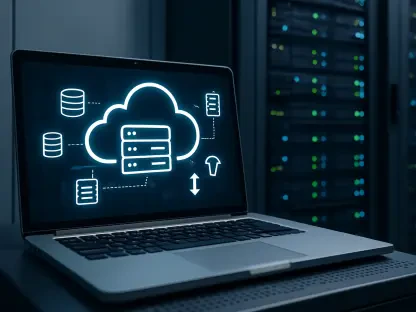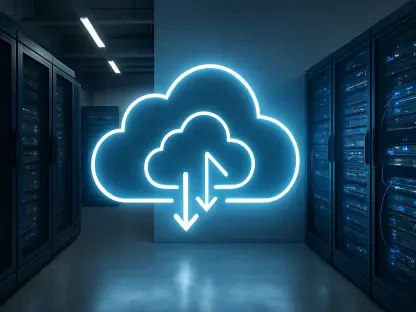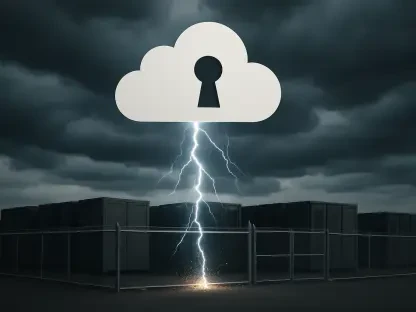In today’s digital age, cybersecurity threats are evolving at an unprecedented pace. From state-sponsored espionage to sophisticated ransomware attacks, the landscape of cyber threats is becoming increasingly complex. This article delves into some of the most pressing cybersecurity threats and incidents, offering insights into the current state of cybersecurity and the strategies employed by threat actors.
The Russian Cyber Espionage Attack
Nearest Neighbor Attack by APT28
A significant cybersecurity threat involves the “nearest neighbor attack,” attributed to APT28, a Kremlin-backed cyber espionage group. This attack vector exploits Wi-Fi networks not protected by multifactor authentication (MFA). The attackers use password-spraying techniques to obtain valid credentials, bypassing MFA-protected services by targeting vulnerable Wi-Fi networks. Once inside, they move laterally, exfiltrating data from compromised machines on neighboring networks. This incident highlights the need for comprehensive security measures, including MFA on all entry points and the isolation of critical networks.
The method employed in this attack underscores the resourcefulness and sophistication of state-sponsored cyber espionage groups. APT28’s use of vulnerable, nearby Wi-Fi networks as a gateway into more secure systems demonstrates their ability to exploit overlooked security gaps. This particular incident serves as a wake-up call for organizations to reassess their security protocols. All potential entry points, including peripheral networks and devices, should be fortified with multi-layered security measures. Additionally, educating staff about cybersecurity best practices and regularly updating system defenses are crucial steps in mitigating such risks. The lessons from this breach should not go unheeded, as every element of an organization’s digital infrastructure must be scrutinized for possible vulnerabilities.
Implications and Countermeasures
The resourcefulness and motivation of threat actors like APT28 underscore the importance of robust cybersecurity defenses. Organizations must implement stringent security protocols, regularly update their systems, and educate employees about potential threats. A proactive approach can significantly mitigate the risks associated with these sophisticated attacks, ensuring that every component of an infrastructure is protected.
In addition to deploying MFA across all access points, it is imperative to isolate critical networks to prevent lateral movement by intruders. Moreover, conducting regular security audits will help identify and rectify vulnerabilities before they can be exploited. Incorporating advanced threat detection systems can also enhance an organization’s capability to respond swiftly to any breach. Ultimately, a combination of robust technology and educated personnel forms the bedrock of an effective defense strategy.
Critical Vulnerabilities in Cisco Firepower Management Center Software
Identifying the Flaw
Cisco recently reported a critical vulnerability in its Firepower Management Center software, affecting versions 6 and 7. This flaw, if unaddressed, could result in the loss of management capabilities due to the potential expiration of a self-signed root certificate authority that is valid for ten years. Immediate attention and the installation of necessary hotfixes are required to prevent a complex renewal process.
This vulnerability is particularly concerning because of its potential impact on network management capabilities. Losing access to these capabilities can severely hinder an organization’s ability to monitor and control data flow, giving malicious actors an opening to exploit the system undetected. To address this issue, Cisco has urged users to apply hotfixes immediately. This case emphasizes the importance of timely software updates and consistent vulnerability assessments. Organizations must prioritize software maintenance and ensure all systems are up-to-date to prevent exploitation by malicious actors. Regular patch management is an essential practice to safeguard against emerging threats and maintain system integrity.
Importance of Regular Updates
The Cisco vulnerability incident emphasizes the critical need for regularly updating and patching software to avoid vulnerabilities that could be exploited by malicious actors. Organizations must prioritize software maintenance and ensure all systems are up-to-date to protect against potential threats. Ignoring these updates can leave systems exposed to threats that could otherwise be mitigated.
Consistent updates and proactive software management are non-negotiable aspects of a robust cybersecurity posture. This includes not only applying security patches but also staying informed about new vulnerabilities as they are discovered. Furthermore, redundancy planning for certificate expirations and maintaining alternative security measures can provide additional layers of protection. By adopting these best practices, organizations can stay ahead of threats and maintain a resilient defense against cyber attacks.
Phishing-as-a-Service Operation Takedown
Microsoft’s Disruption Efforts
Microsoft’s recent disruption of a Phishing-as-a-Service operation based in Egypt, led by Abanoub Nady (aka ‘MRxC0DER’), is a significant development in the fight against cybercrime. This operation, which has been active since 2017, offered ready-to-use phishing kits under various brand names like ONNX, Caffeine, and FUHRER. Microsoft seized 240 fraudulent websites associated with this operation and sued Nady, now controlling all seized domains.
This takedown is a notable milestone in the ongoing battle against phishing. Phishing-as-a-Service models represent a growing threat, making it easier for less tech-savvy criminals to launch sophisticated attacks using pre-made tools. By dismantling Nady’s operation, Microsoft has removed a significant source of these kits from the dark web. This action is not just about curbing phishing activities but also about sending a strong message to other malicious actors operating similar schemes. Such proactive disruptions are crucial in the global effort to protect users and organizations from phishing attacks.
Impact on Cybersecurity
This proactive measure by Microsoft reflects ongoing efforts by major tech companies to combat phishing and protect online users globally. By dismantling organized cybercriminal activities, tech giants can significantly reduce the prevalence of phishing attacks and enhance overall cybersecurity. These actions help to safeguard personal and financial information for countless users, contributing to a more secure online environment.
The impact of this takedown is far-reaching. It not only disrupts the supply chain of phishing tools but also discourages would-be attackers by increasing the risks associated with engaging in such activities. Continued vigilance and collaboration among major tech companies are essential for maintaining momentum against cybercrime. Moreover, it is important for users to stay informed about the latest phishing tactics and to practice caution when dealing with unsolicited communications or suspicious links. By combining technical countermeasures with user education, the fight against phishing can achieve sustained success.
DoD’s Controlled Cryptographic Devices Handling
Assessment and Findings
The US Department of Defense’s (DoD) inspector general released a report assessing the military’s handling of controlled cryptographic items (CCI). Although detailed findings were not disclosed due to the classified nature of the information, the summary indicated no recommendations, implying compliance with established policies. This lack of recommendations suggests a high level of adherence to existing security protocols.
Despite the limited disclosure, the overall compliance suggests a robust framework for the security and management of cryptographic devices within the DoD. This is particularly significant given the high stakes associated with cryptographic items used by the military. Effective handling and rigorous policies are essential to ensure these devices do not fall into the wrong hands or get misused. The findings, even in summary form, reinforce the importance of continuously evaluating and maintaining security protocols for CCIs. The demonstrated compliance offers some reassurance about the DoD’s cyber hygiene practices.
Implications for Governmental Cybersecurity
The DoD’s compliance suggests robust security and management practices within the government. While specifics remain undisclosed, this assessment indicates potential strengths in the secure handling of cryptographic devices, contributing to overall national cybersecurity. The handling of these devices is critical to securing sensitive information and maintaining operational integrity.
The positive assessment also illustrates the importance of stringent security measures and oversight within governmental institutions. Effective management of CCIs is a fundamental aspect of national security, ensuring that cryptographic keys and devices are used and stored securely. Furthermore, regular audits and adherence to best practices are necessary to maintain and enhance these security measures. As cyber threats continue to evolve, the lessons from the DoD’s practices can serve as a model for other governmental and private sector entities striving to safeguard their cryptographic assets.
Helldown Ransomware Targeting Linux and VMware
Evolution of Helldown Ransomware
The Helldown ransomware, initially targeting Windows systems, has now expanded its scope to attack Linux and VMware systems. First detected in August, Helldown has compromised 31 known victims, including the European subsidiary of telecom vendor Zyxel. The threat actor has adopted double extortion tactics, exfiltrating data before encrypting it. This signifies a notable evolution in ransomware strategies, which now often involve multiple layers of extortion to increase the pressure on victims to pay.
The emergence of Helldown ransomware as a threat to Linux and VMware systems highlights the need for enterprises to adopt a holistic approach to cybersecurity. Ransomware attacks are no longer limited to Windows; they have evolved to exploit weaknesses across diverse operating systems, reflecting attackers’ expanding capabilities. This shift necessitates that organizations review and update their security protocols to include all platforms. It also emphasizes the importance of backup and recovery procedures to mitigate the potential damage from such attacks. Advanced threat detection and continuous monitoring of network activity can also help in early identification and response to ransomware threats.
Enhancing Attack Capabilities
Although the ransomware is deemed relatively basic, the group’s possession of undocumented vulnerability code enhances its attack capabilities. This evolution in ransomware tactics underscores the need for organizations to adopt comprehensive security measures and stay vigilant against emerging threats. Preparedness and swift action can limit the effectiveness of such attacks.
The dynamic nature of ransomware means that security measures must constantly evolve to meet new threats. Implementing endpoint protection, conducting regular security awareness training for employees, and maintaining an incident response plan are critical components of a defense strategy. Moreover, the use of advanced analytics and machine learning to detect and respond to anomalies in real-time can provide an additional layer of security. Organizations must also work closely with law enforcement and cybersecurity firms to share threat intelligence and develop coordinated responses to ransomware attacks. By taking a proactive stance, businesses can better defend against the growing sophistication of ransomware operations.
Jupyter Notebooks Hijacked for Illegal Streaming
Exploitation of Data Analysis Environments
A notable cybersecurity threat involves the misuse of Jupyter Notebooks and JupyterLab by threat actors to stream UEFA football matches illegally. Discovered by Aqua Security through a honeypot operation, attackers exploit misconfigured Jupyter environments, utilizing live-stream capture tools like ffmpeg to relay broadcasts to illegal streaming servers. This underscores the vulnerabilities that can arise from improperly configured data analysis environments, often overlooked as potential targets.
The exploitation of Jupyter Notebooks for illegal activities reveals a broader issue of securing data analysis platforms. These tools, designed for flexibility and ease of use, can become conduits for unauthorized actions if not properly secured. The incident with UEFA football matches highlights how even seemingly benign environments intended for academic and professional use can be repurposed for illicit activities. To counter such threats, organizations must enforce strict configuration standards, apply regular security patches, and conduct thorough reviews of all network activities. Continuous monitoring and audit trails can help in identifying and mitigating unauthorized access promptly.
Securing Digital Environments
This incident highlights the necessity to secure all digital environments against unauthorized access. Organizations must ensure that data analysis tools and other digital platforms are properly configured and protected to prevent exploitation by malicious actors. Comprehensive security measures are needed to safeguard these environments from potential misuse.
Ensuring the security of data analysis environments involves a multi-faceted approach. Besides regular updates and patches, user policies should enforce strong authentication methods and role-based access controls to limit potential entry points for unauthorized users. Implementing network segmentation can further isolate critical systems from potential threats. Additionally, security training specifically tailored to the use of data analysis tools can empower users to recognize and respond to suspicious activities. By adopting these practices, organizations can create secure digital spaces that enable innovation without compromising safety.
Unified Understanding
Growing Sophistication of Cyber Threats
Cumulatively, these events underline the growing sophistication of cyber threats and the need for robust, multi-layered security measures. The nearest neighbor attack showcases the lengths to which threat actors will go to bypass security protocols, while the vulnerabilities identified in Cisco’s systems and Microsoft’s proactive measures against phishing illustrate the diverse nature of cybersecurity.
The incidents discussed highlight the relentless advancement of cyber threats and how attackers continuously adapt their methods to exploit new vulnerabilities. As exemplified by the Helldown ransomware and the misuse of Jupyter Notebooks, the scope of these threats is wide-ranging, affecting various systems and environments. This underscores the importance of a proactive and adaptive approach to cybersecurity. Organizations must foster a culture of security awareness, implement layered defenses, and stay informed about evolving threats. By doing so, they can better safeguard their digital assets and maintain resilience against the ever-changing landscape of cyber threats.
Conclusion
In the fast-paced digital era, cybersecurity threats are advancing at an alarmingly quick pace. From state-sponsored espionage to sophisticated ransomware attacks, the cyber threat landscape is becoming ever more complex. This article explores some of the most urgent cybersecurity threats and significant incidents, providing insights into the current state of cybersecurity. It examines how threat actors are operating with increasing sophistication and persistence.
State actors are now leveraging advanced tools for cyber espionage, targeting not just government agencies but private companies to gain sensitive data. At the same time, ransomware attacks have evolved from simple encryption schemes to more elaborate tactics, including data stealing and blackmail, severely impacting businesses and individuals.
Understanding these threats and the methods employed by attackers is crucial for developing effective defense strategies. By staying informed about the latest threat trends and adopting robust cybersecurity measures, organizations can better protect their assets and information from these growing dangers.









